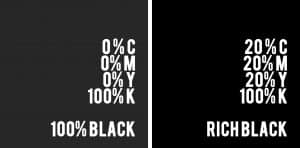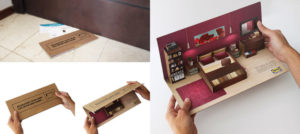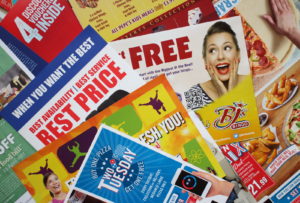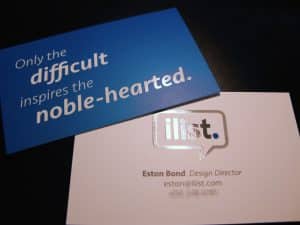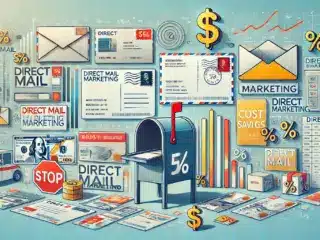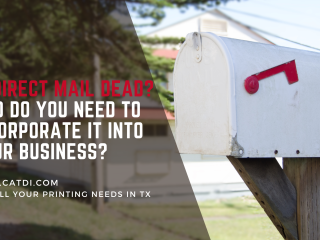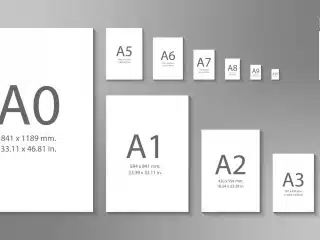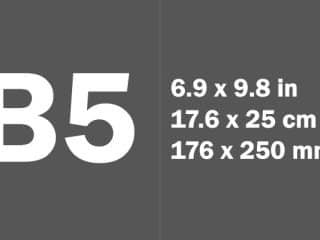Last Updated on November 15, 2024 by Carlos Alonso
Print media advertising is a form of mass communication strategy that uses hard copy printed mediums like newspapers, direct mail, banners, billboards, and magazines to reach consumers. The advertising industry identifies print media as one of the oldest mediums used to promote products.
By advertising print services and brands, businesses target to attract and influence consumer buying habits. More so, marketers use print media advertising to reach out to prospects, existing customers, businesses, and the general public.
What Is Print Media?
It is a written or pictorial form of mass communication. Print media is mechanically or electronically generated by impression or photocopying. Printers can produce multiple forms of communication using automated digital methods.
Print media is a kind of mass communication that creates and disseminates news and information through printed publications.
The general public is given access to this valuable information through data distribution and captivating visuals presented in the traditional format of printed materials, commonly called hard copy. This mode of communication involves the physical reproduction of texts, images, or graphics on tangible mediums, allowing individuals to perceive and engage with the content through the sense of touch.
These printed materials, carefully curated to effectively convey information, come in various forms such as newspapers, magazines, brochures, pamphlets, posters, or books. They serve as a reliable and tangible source of knowledge, enabling people to conveniently peruse through the content at their own pace and leisure.
One of the distinguishing features of this printed means of communication is the ability to capture and reproduce visuals with striking precision and clarity. Whether it be vibrant colors or the timeless elegance of black and white, the printed medium can faithfully replicate images or graphics, enhancing the communicated information’s overall impact and visual appeal.
Furthermore, the tangible nature of these hard copies grants individuals the freedom to interact with the materials physically. This tactile experience allows for a deeper connection and comprehension of the content, as readers can feel the texture of the paper, flip through pages, or even make annotations and notes. Such physical engagement contributes to a more immersive and memorable information consumption process.
In a world where digital media dominates, the availability of data and visuals in printed form continues to hold significant value. The dissemination of information through hard copies caters to a diverse range of readers, ensuring that those who prefer or require physical materials can access and benefit from the shared knowledge. This enduring method of communication serves as a testament to the enduring power of print, as it continues to inform, educate, and captivate the general public through its tangible and visually appealing existence.
Examples of Print Media
It is typical for printers to display print media on paper. However, printing firms may also use various substrates such as canvas, fabric, vinyl, and more. The majority of readers, advertisers, and other media users are familiar with the following examples of print media.
Newspapers and Weeklies
Newspapers are good examples of print media where advertisers have a wide variety of options available. The various types of newspapers include weekly, local, regional, evening, or Sunday editions.
Who are the top consumers of newspapers? This print media attracts a wide range of readers. They include individuals with different interests such as sports, business, entertainment, fashion, politics, local and international news.
Furthermore, newspapers sell space to advertisers who need help displaying ads in text, graphics, photographs, and other illustrations. Some advertising agencies spend a fortune to buy double-page spreads, while others pay smaller amounts for classified ads that contain text only.
Magazines
There are various types of magazines advertisers can use for publicizing services and brands. Trade magazines promote specific industries such as electronics, manufacturing finance, and more. Consumer magazines publicize numerous interests, including fashion, health, sport, hobbies, and current affairs.
Other magazines focus on publications for managers and careers such as marketing professionals, engineers, human resource executives, and more.
A majority of magazines are published weekly, monthly or quarterly. Even so, advertisers can still buy space to place adverts either in black and white or color.
Billboards
Billboards and posters are types of print media that allow promoters to reach consumers on the go. They are are typically large prints and graphics and are placed on the outdoors. Placing these banners in strategic positions such as near malls helps advertisers influence consumers close to the selling counters.
Advertising agents place billboards in public places such as airports and train stations to reach larger groups of patrons. The size of these gigantic boards makes it almost impossible for anyone to miss the advert.
Furthermore, promoters can combine digital and print to alter messages, slogans, or pictures on billboards at their set times.
Is Print Media Still Effective?
News, fashion, manufacturing, and other industries still use traditional print media despite the rise of electronic media usage in the advertising industry. However, there is a slight reduction in advertising expenditure, but print media isn’t dead.
Promoters still use print media to influence consumer habits on selected brands and services because it offers longevity. Consumers will likely read a good brochure more than once, but readers of electronic media discard or reject ads quickly once read.
More so, print media largely contributes to shopper commitment. A majority of consumers still use this medium to search for product sales. According to NielsenIQ, almost 68% of retail stores admit that print media is their ideal strategy for advertising.
Print Versus Electronic Media – 7 Differences
- Print media is the older channel of mass communication as compared to the electronic version, which is current and more advanced.
- It results through publications, while electronic media produces via a computerized medium.
- The traditional media requires the reader to be literate to read the information. However, literacy is not a priority to go through electronic media because consumers can watch the video or listen to the audio version.
- Readers pay more for print media than for electronic media subscriptions. With print media, you only buy what you need when you need it. You can also refer to your print at a later time. Electronic subscriptions expire after a specific duration, and you need to renew even when you may only read it once.
- It is easy to fully pay more attention to a print article than to an electronic medium. Reading an online publication can be distracted by live chat pop-ups, social account messages, or even power outages.
- Print media is not instant or available 24/7. For example, printers produce newspapers daily, weekly, or monthly. However, electronic media is readily available “live.” You can receive news or commercial updates as they happen through your smartphone, television, or news channel.
- Unlike electronic media that offer large to limitless space, newspapers, magazines, billboards, and other print mediums have a limited area of coverage.
What Is an Advertisement in Print Media?
It is an announcement, notice, or form of communication printed in a newspaper, magazine, billboard, flyer, or any other type of print media. Advertisements contain four elements which include headline, copy, illustrations, and signature.
Headline
A good headline draws the readers to a service or brand. It should attract readers to view the advert’s illustration and prompt them to read the copy. Effective headlines must promote a product and also remain brief.
Copy
Copy is the selling communication of a printed/written advertisement that shows how the service meets the user’s needs. The copy message must appeal to the senses, be simple, direct, friendly, and personal. A copy addresses questions about the service and calls the prospect to action, nor or soon.
Illustrations
These are photographs, drawings, or graphic designs used in an advertisement. A good illustration must be captivating, irresistible, and promote action.
It must entice the reader to pay closer attention. This section can include clip art, photographs, images, and stock drawing.
Signature
A signature is a unique identification symbol or logo for a business. Promoters know that a perfect logo gives your business instant recognition. An effective signature uses rhyming words with more than one meaning.
Which Print Media Is Best for Advertising?
You can decide which print media is best for promoting your brand depending on your target audience and your advertising budget. Even so, newspapers and brochures are the most preferred channels of print media. More so, these print mediums have a high rate of consumer confidence.
Newspaper
This print media is considered one of the best mediums of print advertising. Furthermore, newspaper ads are the oldest campaign tools recorded in the history of the industry. In 1704, Boston News-Letter published a newspaper advertisement selling real estate on Oyster Bay Long Island.
Since then, advertisers have continued to use print media to promote brands and services globally. More so, print is favored across all generations by the seniors and millennials.
For example, a report by NielsenIQ shows that in the U.S, 71% of those aged 18-24 have subscribed to electronic newspaper content. However, 65% of those aged 35 and above in the same demographic read print newspapers from Sunday to Monday.
Regardless of the statistics, this type of print media is the oldest medium for advertising. The newspapers have been a means of advertising for over a century. Businesses find daily journals less costly when compared to other alternatives like billboards, magazines, and postcards.
Brochures
Some promoters prefer to use brochures as the best print media for advertising. Besides the simplicity in design, brochures are informative and tell your customers about your brand or services.
Printing brochures is less costly than other print media like magazines. More so, they cost nothing to disseminate. This print media is the best reminder you can give to your customers after a meeting.
Brochures continue to influence your prospects long after physical contact. Some clients find it faster to read print media than it is to visit a website.
Direct Mail
Direct mail stands out as an effective and enduring tool within the realm of print media advertising. By allowing businesses to send physical marketing materials directly to the homes or offices of targeted individuals, direct mail offers a tangible touchpoint that digital channels cannot replicate.
This form of advertising capitalizes on the personal connection and the tactile experience of receiving and interacting with a physical item. When executed with strategic precision, direct mail can yield impressive response rates and return on investment, especially when the messaging is tailored to the interests and needs of the recipient.
Advancements in printing technologies such as digital printing and data analytics have enhanced the capability of direct mail campaigns to be both creatively captivating and highly personalized, further solidifying its place as a powerful component of any comprehensive marketing strategy.
Benefits of Print Media
Before stepping out to source for the best print media, promoters and businesses must scrutinize the advantages and disadvantages of using this medium.
Listed below are some of the benefits to consider when deciding on this medium for your advertising campaign.
Print Ads Create Credibility and Build Trust
According to research, the older generation of the U.S population has confidence in printed ads. They consider handheld advertisements more credible than their electronic counterparts. More so, millennials also trust print media even though they frequently interact with digital advertising.
Consumer and market research indicates that 60% of interviewed respondents showed confidence in newspapers while 58% preferred magazines. Consumers trust print media more than electronic media because the internet contains high levels of misleading information.
The public tends to believe that print media originates from a reputable source or company. More so, effective flyer print marketing can help drive traffic to your website to create conversions and brand awareness.
Findings from Nielson IQ indicate that the top 5 most trusted mediums by the public include TV ads, newspaper ads, magazine ads, billboards, and radio ads.
High Conversion Rates
As indicated in a report by the Chief Marketing Officer (CMO) council, about 80% of consumers respond to direct mail ads. This rate is higher than that of shoppers who react to email ads.
The high response rate experienced in direct mail is why print marketing is more costly than digital marketing. Other print media types such as banners, newspaper ads, brochures, and business cards trigger the same consumer response as direct mail.
Print Helps You Reach Your Ideal Audience
Marketers know that placing ads in print media such as magazines, newspapers, and brochures can help reach your target market or the general public.
Promoters take advantage of the population tally to strategically place adverts in the right place in front of the ideal audience.
Take the example of a physical fitness service provider. A marketer will reach out to sportspeople and individuals who need to stay physically fit by placing an advert on the sports page.
Flexibility
It is the best advertising medium to use when you need to target a specific audience. Print media allows you to choose which section of magazine or newspaper your intended group is likely to read.
This channel of mass communication is not only strategic. But have digital copies, which give marketers more opportunity to reach a wider audience.
Establishes Your Brand
You can reach your target audience by promoting your brand in print media such as magazines, publications, newspapers, and brochures. Printed substrates allow marketers to bring the aesthetic attributes of color, font, texture, and images that help form brand recognition.
Durability
Magazines, brochures, publications, and other print mediums are tangible or hard copy. These items last longer in workplaces and residences, unlike the electronic versions that readers can delete, ignore, or skip with ease.
Readers are likely to keep magazines for a long time and possibly revisit ads more than once or twice.
Substantial Attention Span
Reading from a mobile phone screen is often distracted by pop-up messages or incoming calls. However, consumers consider magazines and newspapers a better medium to read ads because one can focus without being distracted by notifications.
Disadvantages of Print Media
Pay for your target market
High-caliber magazines have glossy covers, top-not writers, photographers, and designers. Promoters pay high charges for quality productions and professional services. Even so, you have the assurance of reaching your high-level target market.
Timing
Print advertising is slow when compared to the digital version. Promoters need to plan ahead of time and ensure that the message remains applicable for the duration it goes to print. This organizing can take weeks or even months.
Decreased Popularity
The rise of digital media has significantly shifted consumer preferences, with many opting for electronic mailing lists to receive updates and promotions. This trend is driven by the convenience and immediacy of digital communication, accessible anytime via mobile devices. As a result, businesses are adapting, investing more in digital marketing to engage a tech-savvy audience. However, physical print media still holds value for certain demographics, highlighting the need for businesses to balance traditional and digital marketing strategies effectively.
Conclusion
Print media advertising is the oldest means of marketing that businesses have used to promote their brands. Newspaper ads date back to 1708 and are still here today, but better, bolder, colorful, and on point. Today, with state-of-the-art technology, the print industry is more advanced and vibrant.
More so, printers print media ads on a variety of substrates such as photo paper, fabric, canvas, vinyl, and more. Today, advertisers display adverts on numerous mediums such as billboards, flyers, brochures, business cards, postcards, door hangers, letterheads, envelopes, wrappers, and more.
Print media influences consumer habits in more ways than compared to electronic media. Finally, print is still the best way to grow your brand awareness. And you can trust that by advertising through this industry, your brand or service can move to the next level.


